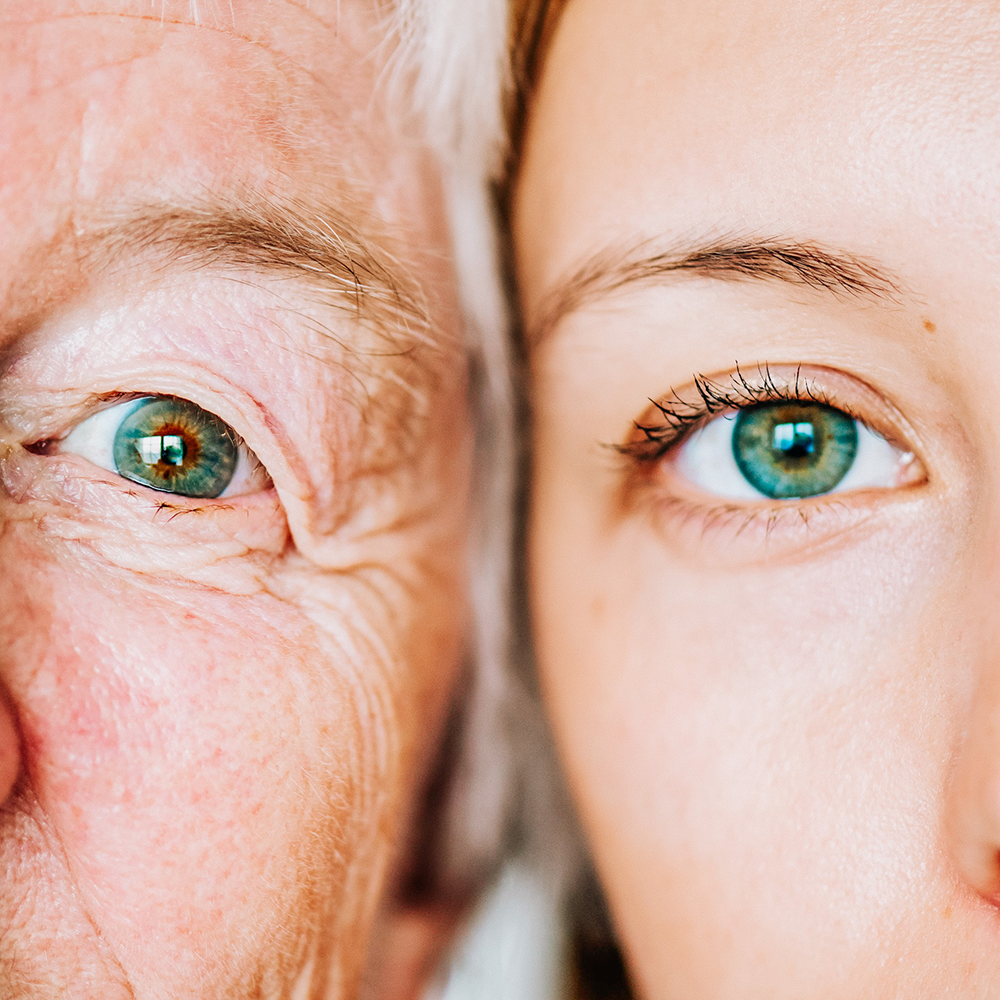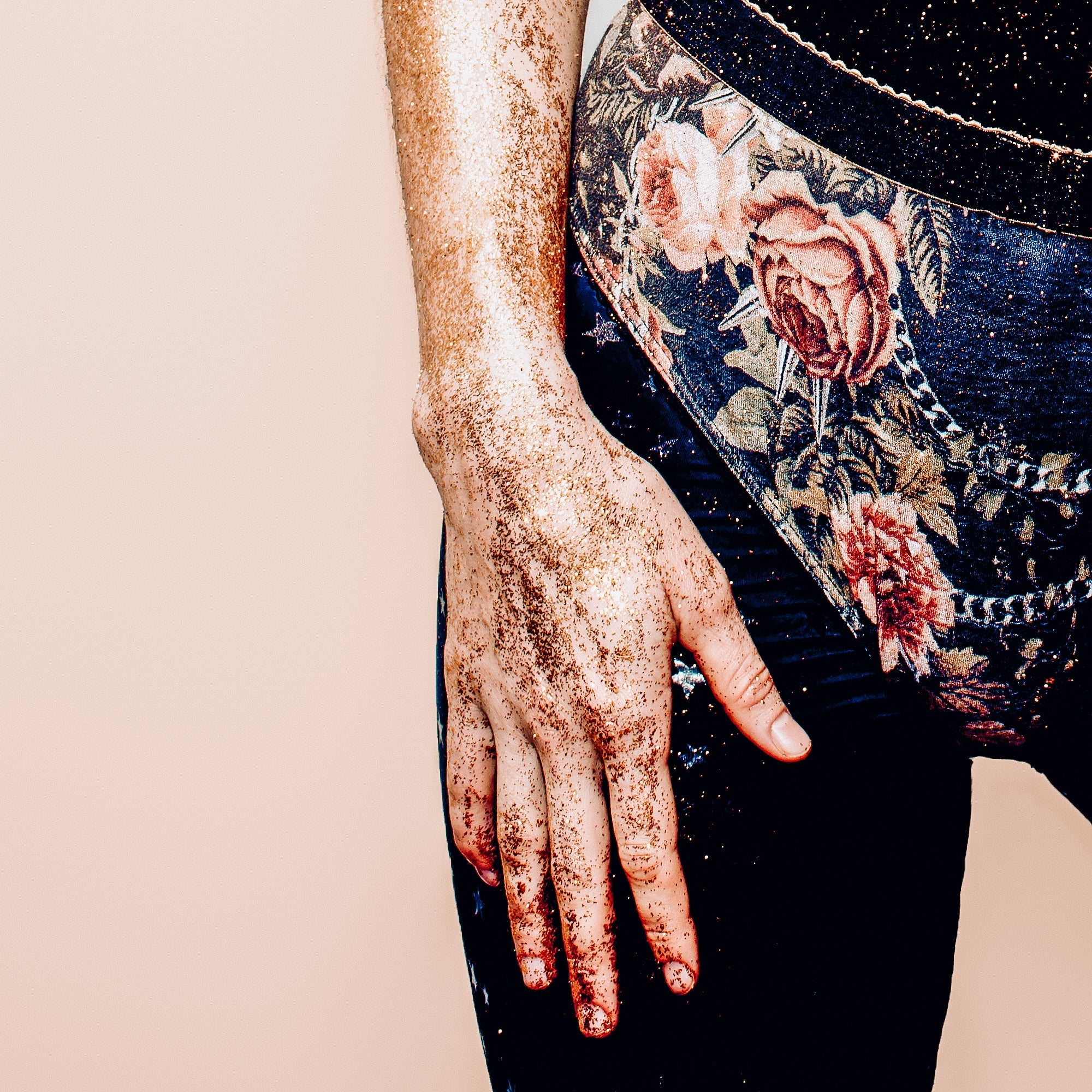Skin as Part of a Larger Symphony: Gut, Stress, Hormones, and the Endocannabinoid System

The skin is the body’s largest organ. Yet, we’ve long held a simplified view of how it works—as if everything boiled down to which cream you use or how often you scrub it. But research shows that the skin is deeply integrated with the rest of the body. Imagine an internal orchestra where every instrument (like the gut flora, hormones, or nervous system) must play in harmony for the skin to thrive. If the drummer gets stressed or the bassist stops playing because the gut flora is out of balance, the symphony falls into chaos. The result can be acne, eczema, redness, dryness, or other skin issues.
In this blog post, we’ll explore how the gut-skin axis, stress, hormones, circadian rhythm, and the endocannabinoid system are interconnected—and how you can use this knowledge, whether you’re a beginner or a skincare enthusiast.
Why Does the Gut Matter for the Skin?
For a long time, we’ve treated the body’s organs as separate entities: the gut is one thing, the skin another. But in reality, they communicate constantly through the immune system, nerve signaling, and hormones. The gut flora—all the bacteria, viruses, and fungi living in your gut—forms a vast “population” that not only helps break down food but also interacts with the immune system. When the gut flora is balanced, known as **eubiosis**, it produces metabolites and signaling molecules that contribute to stable, low-grade inflammation in the body. This creates better conditions for clearer skin.
In dysbiosis, when “bad” or less beneficial bacteria take over, the gut can become more permeable (known as “leaky gut”). It’s as if the border control between the gut and bloodstream suddenly lets unwanted substances through. The immune system responds with inflammation, which can spread systemically and reach the skin. You might notice increased redness, pimples, eczema, or general sensitivity. In an age where many eat quickly, stress, and consume a lot of sugar, it’s not uncommon for skin issues to go hand in hand with gut problems like IBS, bloating, or vague symptoms.
This is the foundation of the gut-skin axis. It might sound advanced, but the core idea is simple: what happens in the gut can affect the skin, and vice versa. Both the skin and gut are major barriers to the outside world, and the immune system overlaps between them.
- For beginners: Consider your diet and digestion if you have persistent skin issues.
- For skincare enthusiasts: Explore how specific probiotic strains (e.g., Lactobacillus rhamnosus GG or Bifidobacterium breve) might influence skin moisture or acne.
Stress and Hormones – When the Orchestra Plays Out of Tune
Stress is often mentioned in passing when discussing skin issues. But what does it really mean to “stress your way to acne” or “stress your way to eczema”? When you feel anxious or overworked, the body’s stress axis, the HPA axis (Hypothalamus-Pituitary-Adrenal axis), is activated, signaling the adrenal glands to produce cortisol. Cortisol is helpful in short bursts to manage acute stress, but with prolonged stress, high levels can:
- Break down collagen in the skin.
- Disrupt the skin barrier’s integrity (making it more permeable).
- Increase inflammation, triggering or worsening skin issues like acne, rosacea, and eczema.
Beyond stress, hormones like estrogen, progesterone, and testosterone also affect the skin. Estrogen often makes the skin feel “plump” and moist, while testosterone can boost sebum production, leading to oilier skin. When these hormones are imbalanced or fluctuate sharply (e.g., during PMS or menopause), the skin reacts quickly. “Period pimples” often occur when sebum production spikes or immune responses in the skin shift.
This is where the endocannabinoid system (ECS) comes in. The ECS acts like a conductor, trying to balance signals from stress hormones and skin cells. If stress overwhelms the conductor, the skin’s defenses against inflammation or excessive sebum production can falter.
- For beginners: Stress and hormones don’t just affect mood and energy—they also impact skin quality.
- For enthusiasts: Study how the ECS interacts with cortisol and sex hormones.
The ECS – Keys, Locks, and Cleaners
The word “cannabinoids” often brings to mind cannabis, CBD oil, or THC. But the body produces its own endocannabinoids, like anandamide and 2-AG. These act as “keys” that unlock receptors (CB1 and CB2) in the body. CB1 receptors are mostly in the brain and influence pain, while CB2 receptors are linked to the immune system. The skin has both types.
Enzymes break down endocannabinoids once their job is done, creating a constant dynamic: produce keys, activate locks, clean up. Think of it as a walkie-talkie conversation with “clear signal, received.” The ECS regulates inflammation and sebum production to maintain balance—a homeostatic mechanism.
In the skin, endocannabinoids help regulate sebum production. Hormonal acne can sometimes stem upon a disruption in how sebaceous glands respond to signals. If the ECS is out of balance due to stress, dysbiosis, or other factors, sebaceous glands can go haywire. The ECS is often called the skin’s “built-in fire brigade”—but if it’s overwhelmed, inflammation can spread.
Autoimmunity, Inflammation, and the Skin
Some skin conditions are chronically inflammatory or even autoimmune. Psoriasis involves the body overproducing skin cells and the immune system “overreacting,” with high levels of cytokines (e.g., TNF-α, IL-17) and scaling. Research suggests that topical cannabinoids, like CBD, may reduce inflammation via CB2 and other receptors (e.g., TRPV1).
Atopic eczema (atopic dermatitis) involves a weak skin barrier, leading to itching, dryness, and redness. The ECS influences the strength of inflammation and barrier recovery. For those with eczema, improving gut health, managing stress, and using cannabinoid products may be complementary—not a miracle cure, but a path to balance.
Circadian Rhythm’s Impact on Skin Barrier and Repair
Sleep is more than rest. During sleep, the body undergoes repair processes, especially in the skin. Melatonin, released in darkness, is both a sleep hormone and an antioxidant that protects skin cells from free radicals. Sleep deprivation increases inflammation and impairs skin recovery—after just a few nights, skin can become drier and less elastic.
Skin cells have clock genes (CLOCK, BMAL1, PER) that control daily processes. The skin is resilient in the morning and repairs at night. The ECS also plays a role, with endocannabinoids fluctuating throughout the day. Blue light from screens suppresses melatonin, so reducing screen time an hour before bed can improve sleep and skin.
Less is More – Avoiding Disruption to the Skin’s Ecosystem
Many believe skincare requires multiple steps: cleansing, toning, serums, peels, etc. But overdoing it can harm the skin’s microbiome and barrier. “Less is more” means choosing necessary products—like ceramides and gentle cleansers—over harsh acids. Too many products can cause irritation or allergies.
- For enthusiasts: Try a “skin detox” with a few pH-balanced products.
- For beginners: Simplicity can suffice—e.g., a gentle moisturizer and cleanser.
Biohacking and the Future of Skincare
Biohacking ranges from simple tricks to advanced techniques. For the skin, consider:
- Cold showers: Boost circulation and possibly endocannabinoids, reducing redness.
- IR light: Stimulates collagen and calms inflammation.
- CBD/PEA: Creams that locally influence the ECS to reduce imbalance.
- Fermented ingredients: Support the skin microbiome, like probiotics for the gut.
Future skincare works with the body—strengthening the good rather than fighting the bad, focusing on why issues arise.
A Holistic View for Everyone
No single factor solves skin problems. A holistic view shows that:
- Gut health shapes immune responses in the skin.
- Stress and hormones cause physical skin reactions.
- The ECS balances the body but can be overwhelmed.
- Circadian rhythm and sleep affect repair.
- Overdoing skincare can disrupt rather than help.
Seeing the skin as part of a symphony is both challenging and liberating—it takes more than a cream, but offers more paths to improvement.
Conclusion
Skincare isn’t just about external products. The skin interacts with the body’s systems, and the ECS is a key player. Support the gut, manage stress, balance hormones, respect circadian rhythms, and try biohacking when needed—it can lead to resilient, harmonious skin over time. Start small: adjust your diet, take a cold shower, reduce screen time. Improvements come gradually—less redness, fewer pimples, smoother skin. It’s a journey where you become the conductor of your own symphony, and it shows on your skin.



Comments